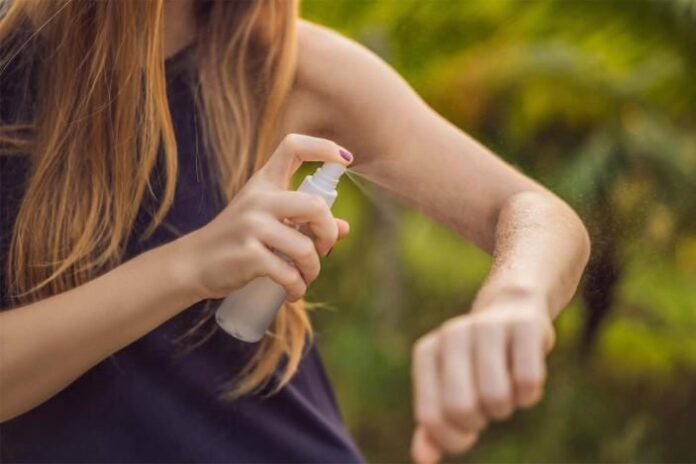A recent study conducted by the strategic consulting and market research firm, BlueWeave Consulting, revealed that the Global Body Worn Insect Repellent Market was worth USD 967.3 million in the year 2021. The market is projected to grow at a CAGR of 10.6%, earning revenues of around USD 1932.60 million by the end of 2028. The Global Body Worn Insect Repellent Market is booming because the demand for body-worn insect repellents has risen as a result of these dismal figures and the steady increase in the number of people who contract mosquito-borne illnesses, particularly in developing nations. The market for body-worn insect repellents has seen significant growth in research and development because several insect species are becoming more resilient to conventional parathyroid-based repellents. However, as public knowledge of insect-borne diseases grows, agencies and government authorities are requiring only licensed and registered insect repellent products.
High Rate of Mosquito-Borne Diseases in the World to Drive Market Growth
Various mosquito-borne diseases like West Nile, dengue fever, and Zika are already thought to affect 700 million people worldwide, and they are responsible for roughly a million fatalities. These depressing statistics and the continual rise in the number of individuals afflicted with diseases spread by mosquitoes, particularly in developing countries, have increased the demand for body-worn insect repellents. Due of some insect species becoming resistant to traditional parathyroid-based repellents, research and development activities have considerably increased across the body-worn insect repellent industry. As a result, the Global Body Worn Insect Repellent Market is predicted to develop at a significant rate during the forecast period (2022-2028).
Request for Sample Report @ https://www.blueweaveconsulting.com/report/body-worn-insect-repellent-market/report-sample
Herbal Mosquito Repellent Products are in High Demand
Many plant-based repellents have traditionally been used to defend against mosquitoes. Plants naturally contain a variety of compounds that act as a defense against plant-eating insects. These compounds are also effective at repelling mosquitoes. Plant-based extracts, such as those from the citronella genus, are a common ingredient in skin-friendly insect repellents, with concentrations ranging from 5-10%. This results in offering lucrative opportunities for the Global Body Worn Insect Repellent Market during the forecast period (2022-2028).
Challenge: Strict Laws Governing the Production of Goods that Repel Mosquitoes
Mosquito repellents are classified as pesticides in the US, Germany, the UK, France, Japan, Australia, Malaysia, Vietnam, and other nations. The World Health Organization (WHO), United Nations Environment Programme (UNEP), and the Food and Agriculture Organization of the United Nations (FAO) all designate mosquito repellent products as pesticides. Such items must also be registered with the US Environmental Protection Agency (EPA) before being sold or used for commercial purposes across the nation. In a similar vein, the European Union and developing nations like India have their own set of regulations governing the production, usage, and distribution of insect repellents.
Segmental Coverage
Global Body Worn Insect Repellent Market – By Distribution Channel
Based on the distribution channel, the Global Body Worn Insect Repellent Market is segmented into Supermarkets/ Hypermarkets, Specialty Stores, Departmental Stores, Convenience Stores, Online, and Others. Segment expansion is anticipated to be fueled by increasing product demand and the availability of multiple offline outlets in urban areas. Supermarkets carry a wide variety of products, such as clothing, cosmetics, oils, and beverages. The likelihood that consumers will buy these items during regular grocery runs is anticipated to help the sector grow. Furthermore, it is anticipated that the absence of proper rural e-commerce will spur growth.
Impact of COVID-19 on Global Body Worn Insect Repellent Market
Insect repellents worn on the body may become more popular as consumer health worries increase as the COVID-19 epidemic spreads like wildfire across the world’s varied regions. Although there is no proof that mosquitoes transmit the COVID-19 virus, individuals nonetheless purchase repellents as a precaution to protect themselves. Particularly in affluent nations, there is a rise in demand for wristbands that deter mosquitoes as a result of the COVID-19 outbreak. Some companies are also petitioning the government to include body-worn insect repellents to the list of needs due to the increase in cases of malaria and dengue.
Competitive Landscape
The leading market players in the Global Body Worn Insect Repellent Market are Reckitt Benckiser Group Plc, Godrej Group, Insect Shield LLC, Tender Corporation, Spectrum Brands Holdings Inc, Johnson & Johnson, Quantum Inc, Dabur International, Enesis Group, The 3M Company, Columbia Sportswear Company, Pont de Nemours and Company, and other prominent companies. The Global Body Worn Insect Repellent Market is highly fragmented with the presence of several manufacturing companies in the country. The market leaders retain their supremacy by spending on research and development, incorporating cutting-edge technology into their goods, and releasing upgraded items for customers. Various tactics, including strategic alliances, agreements, mergers, and partnerships, are used.
Contact Us:
BlueWeave Research Blog
Phone No: +1 866 658 6826
Email: info@blueweaveconsulting.com














